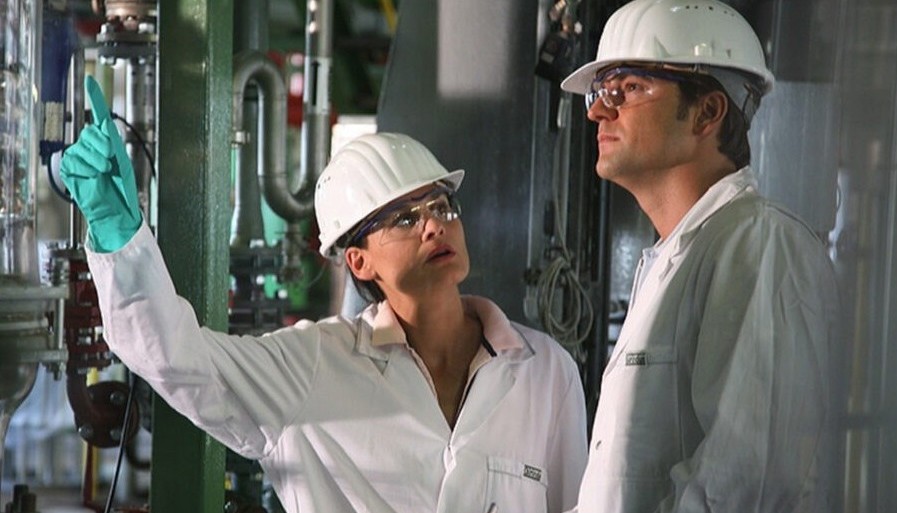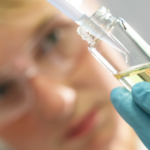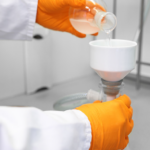I’m always looking back if I want to see the future. The modern pharmaceutical industry has its roots in the technology that became available in the late 19th century. Robert Koch and Louis Pasteur, the founders of modern microbiology, would have struggled to succeed without developments in the microscope, for example, that helped them discover disease-causing pathogens.
And there is a real parallel to the situation today. Over the years, there have been enormous developments in the understanding of disease, but on top of these, modern medicine and drug discovery are underpinned by technology. Where would medicine be without CT, MRI and PET scans? And where would drug discovery teams be without all the computer technology, lab equipment and screening techniques that have advanced exponentially in the past decade?
None of these were developed by a single smart individual. Rather, each was designed and developed by team players and companies all over the world. The radiolabelled tracers used in PET scans, for example, are created by very different groups of scientists and technologists from those who develop the machines.
It’s the same in the world DAPIN inhabits. We are one of those team players, as we synthesise building blocks for those tracers – key components that combine with radiolabels to allow clinicians to visualise what is going on in the body in those scans.
And we are also experts in making APIs – the active pharmaceutical ingredients that are at the heart of a drug’s therapeutic effect. This is another team effort – a pharmaceutical company designs and tests a potential new drug, we make the API, and another team of experts formulates them into the dosage forms given to patients. Take out any part of that team, and there would be no tablet, capsule, injection or inhaler to treat the patient.
Another great example is the antibody-drug conjugate, or ADC. Here, an antibody that targets a cell within the body – usually a tumour – is combined with a highly potent API that kills the cancer cell. The two are joined together by a cross-linker that holds them together until the ADC reach the active site in the body. We make those linkers. No linker, no ADC. Again, we are a small part of a big team effort, and one that could not succeed without all the pieces being in place.
So what else does DAPIN bring to the team? Another aspect is the fact that we can meet all volume requirements, from small to much larger. A client might only want a few milligrams of an API in the very early stages of a project. As it progresses through the development pipeline, they might need a kilogram or three. And as it reaches the late stages of clinical trials and gets licensed and launched, they will need a lot more.
At each stage of a drug’s development journey, the requirements are subtly different. Early on, speed is key, as they need to know whether that initial promise in the lab is backed up by the results of preclinical testing, and whether it is worth advancing on to the next stage, or whether a rethink will be required. As it moves into clinical trials, while speed is still important, meeting strict regulatory quality standards becomes critical, with audit trails proving the API meets all good manufacturing practice (GMP) standards.
Once the results of each clinical phase become clear, and they are ready to move on to the next phase, they expect us to react very quickly, delivering the larger quantities for formulation and then dosing to clinical trial subjects. Any delays in delivering the API have huge knock-on effects on the rest of the players in the team, and could cost millions. They don’t need the API until they need it – but when they need it, they need it now.
There is no substitute for experience. It’s not just making the material itself – it’s knowing what the regulators are looking for and meeting all of their demands, it’s delivering the material on time and, of course, making sure the API ticks all the quality boxes. And it’s knowing where in a multistep synthesis the regulators will require full GMP documentation to be available. Too much in the earlier stages, and the whole process will be slowed down unnecessarily. But not having GMP processes in place for the steps where they are required will cause knock-on problems on filing.
Here at DAPIN, we focus on supporting our clients in drug discovery and development with tailor-made solutions, delivered both quickly and reliably. We are proud to be one of those important members of the wider drug development team.
Author
DR. HARALD ZIMMER
Business Development


Contact Us
Contact us today to explore reliable, end-to-end API and
Intermediates solutions tailored to your needs.




